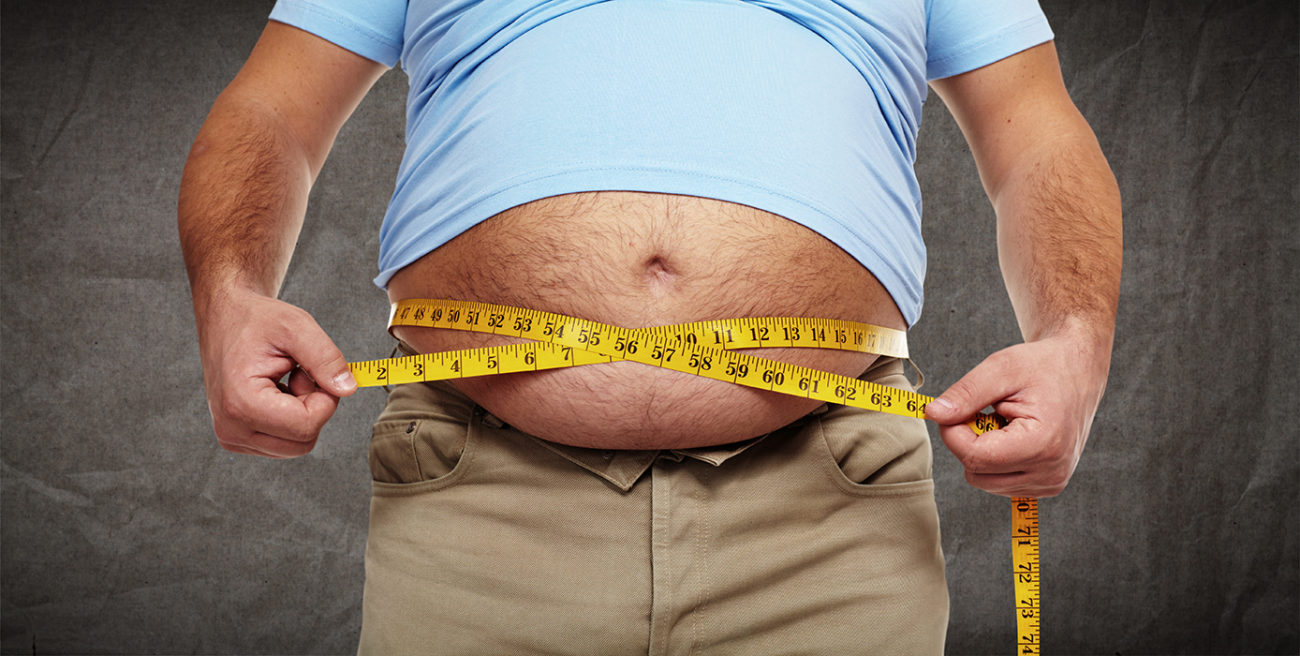Belly Fat? Lose It.
What Is Belly Fat & How to Get Rid Of It
By: Charles Poliquin
– 9/20/2012
Do you want to lose fat? The misconceptions about how to lose fat are extensive and are commonly spread by both uninformed fitness professionals and the mainstream news media. For example, a recent research study from Duke University that was featured on many of the popular mainstream news sites titled, “The Effects of Aerobic Versus Resistance Training on Visceral and Liver Fat Stores, and Liver Enzymes,” reported that aerobic training is significantly more effective at burning fat than resistance training alone and equally as effective as resistance and aerobic training together. Maybe, if you’re comparing resistance training on Cybex machines with intense aerobic training for 40 minutes a session.
What many of the news reports don’t clarify is that the resistance program consisted of eight Cybex machine exercises three times a week, whereas the aerobic training program was at 75 percent of maximal oxygen uptake for a total of 12 miles a week. Once we know that the resistance program used machines with what appears to be a muscular endurance training program (8-12 reps, 3 sets— or is it hypertrophy? The weight or percent of the 1RM isn’t mentioned in the study, so we don’t know for sure), while the aerobic training group exercised at a fairly vigorous intensity (75 percent of the max oxygen uptake is 80 percent of heart rate max) it’s not surprising to hear that the aerobic exercise was more effective at burning fat than machine lifting.
Another concern with how the study results were presented was that most of the news reports shouted that jogging or cardio was best for burning belly fat. This implies that cardio will help you lose the fat that covers the abdominals. This fat is called subcutaneous fat, but the study actually tested the effect of the different training programs on visceral fat—the kind of fat that is deep inside the body and surrounds the organs or even gets into organs such as the liver. This fat can make your stomach stick out, but it’s not what most people think of when they talk about losing abdominal fat. The study is actually valuable and provides insight into strategies for losing fat to prevent disease; the concern is how it is misrepresented in the media.
In fact, there are a number of recent studies that can guide you in designing the best fat burning programs for health and a lean physique. I review them here, and will also clarify the differences between visceral and subcutaneous fat for anyone who remains mystified by the distinction.
What is Subcutaneous Fat?
Subcutaneous fat is right below the outermost layer of skin. This is fat you can pinch with your fingers and can be tested with calipers. Subcutaneous fat in the stomach area covers the abdominal muscles, and if you have too much of it, you won’t be able to see your ab muscles. In comparison, visceral fat is located between organs, deep inside the body. You can’t grab it, although it will make a stomach stick out if you have a lot of it. There is evidence that men tend to have more visceral fat than women, who tend to have more jiggly subcutaneous fat. Once women reach menopause they begin to develop more visceral fat as well on account of having less estrogen.
What is Visceral Fat?
Visceral fat sits deep behind the abdominal wall and surrounds the organs, within the peritoneal cavity. Visceral fat negatively affects health by increasing inflammation in the organs, in part because it releases substances called adipokines, which are cell-to-cell signaling proteins that increase blood pressure and insulin dysfunction. Visceral fat also decreases the amount of adiponectin in the body, an essential hormone for fat burning that helps speed up metabolism, which means there are more triglycerides getting into the blood stream. The combination of decreased insulin sensitivity, hypertension, and elevated triglycerides often result in atherosclerosis, higher LDL cholesterol (the bad kind), and is an important factor in the development of diabetes.
Are There Other Particularly Worrisome Fats?
Epicardial fat is a type of visceral fat that should be mentioned due to its serious negative health effects. It is deposited around the heart and is considered a metabolically active organ, which significantly alters heart function.
What is the Difference Between Adiponectin and Adipokines?
Adiponectin is secreted from adipose or subcutaneous fat and it helps with glucose uptake and insulin sensitivity. It has anti-inflammatory effects that support healthy blood pressure and heart function. Diabetics and overweight people have lower levels of adiponectin, which means that the more fat you have, the more fat you will have! As mentioned above, adipokines are released by visceral fat and include IL-6 and TNF-a, which raise blood pressure, decrease insulin sensitivity and cause inflammation. Basically, fat builds fat, and it appears that fat, particularly visceral fat, can also degrade muscle, leading to more fat. Not a good situation.
What Are Other Negative Effects of Visceral Fat?
More visceral fat leads to lower testosterone and poor health in men. One study found a link between greater visceral fat and lower total and free testosterone, and lower sex-hormone-binding globulin. Additionally, C-peptide levels, a marker of chronic inflammation, and insulin were elevated, indicating a pre-diabetic state. Testosterone will almost certainly be lower in men with more visceral fat, which leads to diabetes, less muscle mass, less bone mineral density.
What Is the Best Workout For Getting Rid of Fat?
The MOST effective way to get rid of visceral fat is to do
high-intensity intervals and strength training.
Of course, for best results, you should do what you enjoy most because there’s more chance you’ll stick with it, and luckily the evidence shows there are a variety of effective options. Some individuals won’t stick with a workout program that is extremely hard, and overweight or novice exercisers may not be ready for high-intensity intervals, meaning it is valuable to present alternatives that can help decrease visceral fat. But, I’ll start with most effective strategy.
Sprints Shown To Be Most Effective
A research review of
high-intensity training (HIT) programs
noted that “the effect of regular aerobic exercise on body fat is negligible” whereas research into high-intensity exercise “indicates that it may be more effective at reducing subcutaneous and abdominal (visceral) body fat than other types of exercise.”
One study that compared the effect of high-intensity exercise (60 sprints of 8 seconds each, 12 seconds rest) with aerobic exercise (60 percent of maximal oxygen uptake for 40 minutes) found that HIT resulted in significant decreases in overall fat mass, while the aerobic exercise group had a fat gain of 0.44 kg on average. The HIT group also had a significant 9.5 percent decrease in visceral fat, whereas the aerobic group had a non-significant increase of 0.2 kg or 10.5 percent. Of related interest is that the HIT group decreased fasting insulin significantly more than the aerobic group (31 versus 9 percent).
A second study found that in men with type 2 diabetes, an eight-week program that mixed aerobic and anaerobic exercise (twice a week of 45 minutes of aerobic exercise at 75 percent of max, and once a week of 5 sprints for 2 minutes at 85 percent) had a significant 44 percent decrease in visceral fat, with a 58 percent improvement in insulin sensitivity. They had no change in bodyweight but did have a 24 percent increase in thigh muscle cross sectional area, indicating muscle development, which accounted for the fact that they didn’t decrease bodyweight.
A third study performed on obese women compared a 16-week low-intensity protocol with a high-intensity protocol, based on rating of perceived exertion. The protocols produced comparable volumes of work as well as almost equal calories burned and miles completed. Despite this, only the HIT protocol yielded significant changes in metabolic markers or visceral fat loss. They lost significantly more total and visceral fat than the low-intensity group. Interestingly, both groups had similar exercise adherence to the program with 80 percent of each group completing the study, indicating that the high-intensity protocol was not too demanding for an obese, previously untrained population.
High-intensity exercise is effective because it increases exercise and post-exercise fat burning and may yield decreased post-exercise appetite. During exercise and after HIT, fat burning increases to remove built up lactate and hydrogen ions. Elevated growth hormone also supports fat burning and is a result of HIT programs. Long distance lower intensity cardio decreases natural growth hormone production.
The Best Workout Protocol: Build Muscle to Prevent Fat Attacks
The very best protocol for visceral fat loss and a lean physique is high-intensity interval sprints and a resistance training program. This will allow you to burn visceral fat and build muscle. More muscle will elevate metabolism and support a better hormonal and biochemical environment by lowering adipokines—remember that evil chemical that creates more fat and breaks down muscle.
A dual program that combines HIT, or at least strenuous aerobic training in conjunction with resistance training, is clearly essential for health. You’ll be getting rid of the unhealthy fat and building up an arsenal of muscle to protect against future fat attacks. You’ll also be more anabolic with growth hormone bursts, and you’ll have the benefit of acute elevations in testosterone if the volume and weight lifted from the training program is significant.
What Else Works?
The Duke study shows that steady-state aerobic training at a vigorous intensity such as 75 percent of the maximal oxygen uptake does burn visceral fat and can improve metabolic biomarkers, and that such a protocol is better than a machine resistance training protocol. But that doesn’t mean that it’s better than all resistance protocols.
Based on the clear evidence that high-intensity anaerobic-style exercise is best for burning visceral and total body fat, it’s reasonable to make the conclusion that high-intensity resistance training would be effective as well. For example, circuit training with heavy weights can be effective for hypertrophy, and it triggers a potent growth hormone release, leading to more fat burning. And as mentioned above, it’s clear that pairing both aerobic and anaerobic training with weight training will provide the better long-term overall results, despite the fact that the Duke study pushes just aerobic training for visceral fat loss.
What Exactly Does the Duke Study Say?
The study compared three programs: the aerobic training program (AT), resistance training (RT), and resistance and aerobic training (RAT). The AT group lost 2 kg of bodyweight, lost 15.9 square cm of visceral fat, lost 25.1 square cm of subcutaneous fat, decreased liver fat score by 2.5 points, and improved fasting insulin sensitivity by 0.4. The RT group gained 0.7 kg bodyweight in the form of lean mass, gained 0.8 square cm in visceral fat, lost 8.2 square cm in subcutaneous fat, decreased liver fat score by 0.4, and improved fasting insulin sensitivity by 0.10. The RAT group lost 2.1 kg bodyweight, lost 10.9 square cm of visceral fat, lost 28.7 square cm of subcutaneous fat, decreased liver fat score by 1.8, and improved fasting insulin sensitivity by 0.5.
Overall, fat loss was greatest in the RAT group, but none of the differences between the RAT and AT scores were statistically significant. The good news from this study is that a combination protocol will improve health and lead to visceral and overall fat loss, even if the weight program is less than ideal. It also provides an option for those unique individuals who enjoy steady-state aerobic training. But, take note that aerobic training at 75 percent of max oxygen uptake is not what most individuals are doing on the cardio machines at the gym—that long, slow cardio that is common is not 75 percent of max. Rather, 75 percent of maximal oxygen uptake is equal to 80 percent of the heart rate max. For a 40-year-old male this would be exercising at a heart rate of 144 to 157 beats per minute for 40 minutes.
Dietary Interventions: Prebiotics, BCAAs, and Fructose
Take prebiotics to decrease visceral fat and improve insulin sensitivity. Research performed on rats shows that taking a prebiotic supplement that contains bifidobacterium adolescentis can improve glucose uptake and decrease visceral fat, and it is particularly effective in doing so when a high fat diet is consumed. In one study, rats were fed either a standard diet, a high fat diet, a high fat diet with prebiotics, or a standard diet and prebiotics. The high fat diet group had significant visceral fat gain with decreased glucose infusion and greater insulin resistance than the other groups. In contrast, the high fat prebiotic group didn’t have these negative effects and ended up with a comparable amount of visceral fat as the standard diet groups.
Supplement with branched-chain amino acids (BCAAs) to burn visceral fat in conjunction with a an intense training program. The benefits of BCAAs are extensive in relation to speedy recovery, muscle building, and fat burning—for all the details read Ten Benefits of BCAAs . Leucine-enriched BCAA supplementation has been shown to decrease visceral fat significantly, and they should be a part of any smart nutrition protocol.
Limit fructose intake because it is known to slow down thyroid function, reduce metabolism, mess with insulin health, all leading to visceral fat gain. Fructose doesn’t raise insulin, meaning glucose isn’t getting into cells. Instead it is hanging around in the body, wrecking havoc, and leading to a fat attack. My nutrition colleague Robert Crayhon suggests that the average American eat no more than 5 to 10 grams of fructose a day, while very active individuals may up this to 20 to 30 grams.
References:
- Grossman, M. Low Testosterone in Men with Type 2 Diabetes: significance and Treatment. Journal of Clinical Endocrinology and Metabolism. August 2011. 96(8), 2341-2353.
- Seidell, J., Bjorntorp, P., et al. Visceral Fat Accumulation in Men is Positively Associated with Insulin, Glucose, and C-Peptide Levels, but Negatively with Testosterone Levels. Metabolism. September 1990. 39(9), 897-901.
- Hunter, G., Brock, D., et al. Exercise Training Prevents Regain of Visceral fat for 1-Year Following Weight Loss. Obesity. 2010. 18(4), 690-695.
- Chen, J., Wang, R., et al. Bifidobacterium Adolescentis Supplementation Ameliorates Visceral Fat Accumulation and Insulin Sensitivity in an Experimental Model of the Metabolic Syndrome. British Journal of Nutrition. September 2011. Published Ahead of Print.
- Abate, N., Burns, D., et al. Relationship of Generalized and Regional Adiposity to Insulin Sensitivity in Men. Journal of Clinical Investigation. 1995. 96, 88-98.
- Klein, Samuel. The Case of Visceral Fat: Argument for the Defense. The Journal of Clinical Investigation. June 2004. 113(11), 1530-1533.
- Shah, A., Hernandez, A., et al. Adipokines and Body Fat Composition in South Asians: Results of the Metabolic Syndrome and Atherosclerosis in South Asians Living in America Study. International Journal of Obesity. August 2011. Published Ahead of Print.
- Irving, B., Davis, C., et al. Effect of Exercise Training Intensity on Abdominal Visceral Fat and Body Composition. Medicine and Science in Sports and Exercise. 2008. 40(11), 1863-1872.
- Boudou, P., Sobnngwi, E., et al. Absence of Exercise-Induced Variations in Adiponectin Levels Despite Decreased abdominal Adiposity and Improved Insulin sensitivity in Type 2 Diabetic Men. European Journal of Endocrinology. 2003. 149(5), 421-424.
- Boutcher, Stephen. High-Intensity Intermittent Exercise and Fat Loss. Journal of Obesity. 2011. Published Ahead of Print.
- Trapp, E., Chisholm, D., et al. The Effects of High-Intensity Intermittent Exercise Training and Fat Loss and Fasting Insulin Levels of Young Women. International Journal of Obesity. 2008. 32(4), 684-691.
- Stanhope, K., Schwarz, J., Keim, N., Briffen, S., et al. Consuming Fructose-Sweetened, not Glucose-Sweetened Beverages Increases Visceral Adiposity and Lipids and Decreases Insulin Sensitivity in Overweight/Obese Humans. Journal of Clinical Investigation. May 2009. 119(5), 1322-1334.




